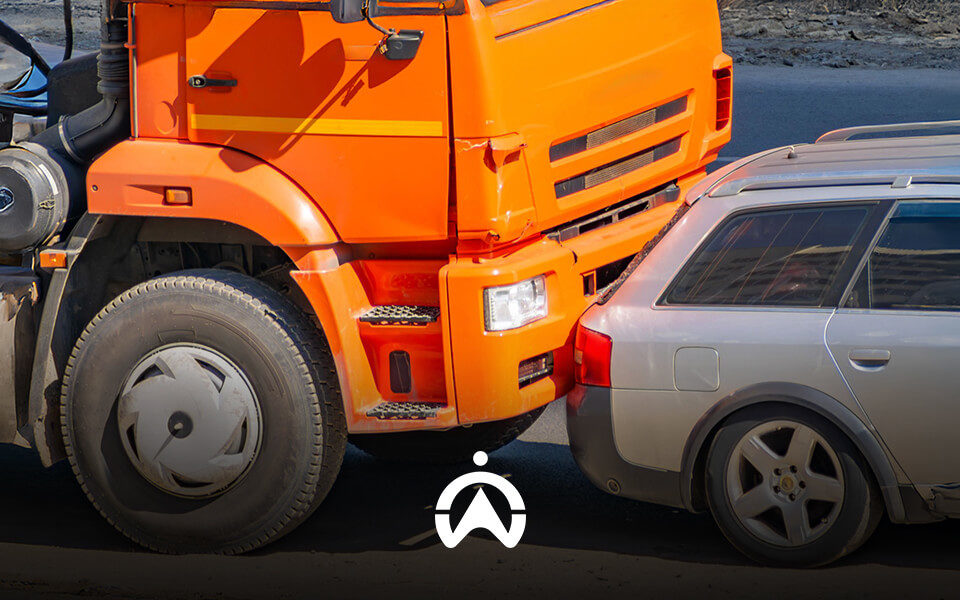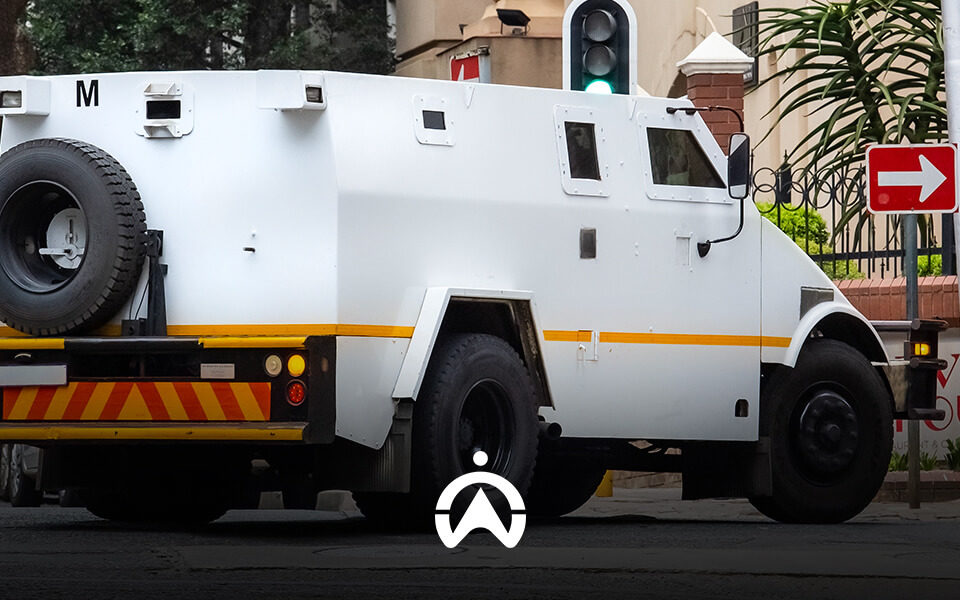What Is Fleet Management in Logistics? How to Master Your Operations
Fleet management and logistics have so many similarities that they may seem like siblings, but once you learn more about them, they’re more like cousins.
Whether your fleet is en route to long-distance destinations or precious cold chain cargo is destined for fresh delivery, it probably needs a pair of extra eyes on the road to safely reach its destination.
Fleet managers should ensure their fleets deliver goods efficiently, but how do they tackle challenges in the logistics industry?
Let’s find out how to master fleet management in logistics to get that optimum efficiency.
What is fleet management in logistics?
Effective fleet management is the equivalent of smooth sailing for a fleet. A fleet manager’s role is to track and monitor their fleet while managing its efficiency and effective task completion. In logistics, this level of smooth sailing plays a vital role in maintaining a service that competitors have no choice but to envy.
The role of fleet managers in logistics
The differences between a fleet manager and a logistics manager are not too far apart.
A logistics manager oversees the inventory and negotiates rates for the fleet, whereas a fleet manager’s job is to have that inventory delivered on time, on budget, and without hassle. This is done by tracking vehicle routes, checking driver behaviour during the transportation process, and analysing data that helps ensure goods are in the right place at the right time while still safeguarding the fleet.
Having a fleet manager in logistics is crucial to advance businesses to greater heights. The marriage between fleet management and logistics is one to be celebrated as it forms the basis of goods production from beginning to end and how consumers receive their products. Route planning and fleet tracking require precision, which should be one of the main characteristics of a successful fleet manager.
There are different ways to merge logistics and fleet management.
For example, a logistics manager may calculate the amount of goods packaged into fleets, but the fleet manager must also keep track of the fuel and time required to deliver those goods. If a company that supplies uniforms to various schools suddenly struggles to meet these delivery requirements, the fleet management process can provide valuable insight to help pinpoint the issue. Let’s dive into this by looking at fleet management versus logistics to better understand how both can encourage better business operations.

What is fleet management vs. logistics?
I’m sure we all have a pretty good idea of what fleet management is at this point. However, fleet management in logistics is more specific and probably less familiar. Never fear, though; to put your mind at ease, we’ll discuss each separately with clear definitions.
- What is fleet management?Most of us have heard the basic definition of fleet management quite a few times before. So, without sounding like a broken record, it’s how businesses track their fleets and ensure that goods arrive securely and on time. A fleet manager’s job is to essentially gain insight and use data to improve driver behaviour, routes, vehicle maintenance, and compliance.
- What is logistics?Transporting your goods from Johannesburg to Cape Town is perhaps the simplest way to explain logistics, but what is it really? Logistics is finding the best way to ensure that your goods are delivered to their required destination. It is essentially the movement of goods with a rhythm and flow that allows companies to provide excellent customer service.Logistics is almost like completing a puzzle: from loading goods onto trailers and trucks to managing the flow and route control, every piece fits perfectly to complete the picture.
Now that both concepts have been explained separately, let’s take a look at how they work together and affect the way you run a successful business.
How does logistics influence business operations?
Business operations rely mainly on product and service delivery, so you’re bound to already have logistics in place to run a successful operation. To make sure you do, though, it’s important to understand the types of logistics and how they influence the overall operations of your business, so let’s look at an example.
In the clothing industry, the main point is to have a full item of clothing ready to be worn. But that has to start somewhere:
- The process starts with inbound logistics, transporting raw materials like fabrics and textiles. Keeping the next step in mind, these fabrics have already been chosen to bring the design to life and are therefore being transported to their next home, which is manufacturing/sewing. We need fabric to make clothes and that fabric has to find its way to where it can be manufactured into the desired product, and this is where inbound logistics plays a fundamental role.
- Once the clothes have been sewn and ready to be sold, the outbound logistics process begins. This is when the finished product is transported to where it will be sold. This may be online or in physical stores where consumers can feel and try the clothes on before purchasing.
- If a piece of purchased clothing cannot magically resize to fit the buyer and needs to be returned, we then turn to reverse logistics. Returning products to their manufacturer is a necessary part of logistics that any business dreads. This can happen due to a lack of sales or product malfunctions, and the logistics department would then have to transport all goods back to where they were made. What then happens to the products lies solely on the company, whether to be recycled or destroyed.
To effectively attain and maintain success, businesses need to understand the flow set off by logistics-based processes. From the time the raw materials are transported to the actual production phase, a sequence is formed. Additionally, the overall operation is reliant on how well each department plays its role and how efficient they are in carrying out duties.
How to optimise your operations—solutions for efficient logistics management.
Now that we know the different logistics types, we can conjure up ways to enhance our business operations and optimise our logistics management. All businesses aspire to be the best in their respective industries and the quickest way to do that is excellent service delivery.
- It all starts with a concise packaging routine. Having all goods packaged, stored securely, and ready for transportation requires a set routine. A solid packaging routine also helps take the edge off the offloading and stock-taking process after delivery.
- Effective communication serves as a foundation for all solutions, and communicating while applying your logistics strategies can increase their efficiency.
- Fleet route planning and regular fuel monitoring help you map out how much time your fleet spends on the road. You can measure how much fuel is needed for your fleet vehicles, so they successfully but also economically reach their destinations.
In a logistics company, the main priority is delivery, and once you have a flow that works for your business, efficiency comes naturally. You can promote customer satisfaction by implementing a system in line with your company values and securing a sustainable workflow with your stakeholders.
Here’s how to improve logistics using a smart fleet management system
Turning your business into a well-oiled machine takes time, and during this time, a rhythm is developed. Introducing a compatible system that covers all bases and improves your operational rhythm is a winning recipe for seamless performance.

How fleet management systems work
Having covered enough tar on fleet management and logistics, we can look into how logistics can be improved through fleet management systems. A telematics system like Cartrack’s fleet pages allows you to monitor your company’s fleet while recording all events that occur throughout the procurement journey.
Logistics is improved tremendously when fleet managers can establish the following:
- Fleet location: Locating your fleet increases the need for speedy deliveries.
- Fuel consumption: Managing fuel consumption decreases the number of times drivers need to stop and refuel and lowers the risk of fuel theft.
- Fleet speed and driver behaviour: The main goal of logistics is delivery, but safety comes first. Fleet telematics improves fleet speed and driver behaviour through live tracking.
- Fleet maintenance: A good fleet management system with real-time alerts and timely reminders allows fleet managers to monitor vehicle health and longevity.
How Cartrack Nigeria can help you master your logistics operations with superior fleet management
Cartrack Nigeria offers various packages customisable to suit your business. Improving your operations has never been easier, whether you prefer tracking your motorcade to spot where your fleet is or limiting the number of stops by creating your own routes through geofencing; Cartrack Nigeria is here to help. Our features are the key to mastering your operations and can lead to service that is incomparable to competitors.
- Cartrack deliveryCartrack’s Delivery tool simplifies task assignment and real-time tracking from dispatch to delivery. Digitised processes offer full visibility into task progress and allow easy job allocation to drivers. Through route optimisation, Delivery allows efficient task prioritisation, reducing travel time, fuel consumption, and turnaround times.
- Live location trackingOur live location tracking technology allows you to track your fleet in real time via GPS for full visibility. The benefit of having a constant and real-time eye on your fleet is that you can check vehicle locations for productivity’s sake or if there is an emergency and you need to send help or track down a stolen vehicle.
- GeofencingCartrack’s geofencing feature lets you set virtual boundaries around specific locations. This allows logistics and fleet managers to detect vehicles entering or exiting zones with warehouses or delivery drop-off locations. This feature broadens your view of vehicle activity and helps you ensure your drivers stay on schedule with their tasks.
- Camera solutionsCartrack’s SmartCabin camera solution comes with AI-based driver behaviour detection to help you get real-time visual and audio contact with drivers and have them receive audible alerts when the camera’s AI technology picks up distracted or unwanted driver behaviour like cell phone use, smoking, or yawning.Recording starts once the vehicle’s ignition is fired up. Drivers who are aware of their surroundings tend to practice responsible driving, which minimises operational costs such as fuel and vehicle maintenance, improving productivity.
Diraro Group and Cartrack
Instead of telling you how Cartrack changes lives and transforms operations, let’s show you. Meet Diraro Group, a logistics company with a whopping 120 high-capacity fleet vehicles that specialises in transporting bulk supplies. Here’s how Cartrack helped them supercharge their operations.
Contact Cartrack Nigeria to discover how you can master your logistics through fleet management with trailblazing fleet management technology.




